In honor of his birthday, we celebrate the career of indie icon, writer, director, actor, podcaster, and producer Adam Green.
“Hatchet 2 – Adam Green” by rwoan is licensed under CC BY-NC 2.0Adam Green’s passion for filmmaking began with his (sadly unseen) directorial debut, Coffee & Donuts (2000). The film was a semi-biographical, lighthearted romantic comedy about two friends, Adam and Steve, who strive to launch their morning radio program of the small town, while Adam concurrently struggles to overcome a breakup. Green made the feature film for only $400, using equipment from the cable advertising facility that he was working for at the time and employing volunteers for everything from cast to crew. Though issues with rights and music licensing have kept Coffe & Donuts from reaching audiences, the idea served as the basis for Green’s beloved series Holliston.
Despite the difficulties with his first foray into feature filmmaking, his next film, Hatchet (2006), would go on to launch a successful franchise, as well as an iconic slasher villain. It would garner a worldwide cult following and cement Green’s legacy as a horror hero. Now, two decades later, the multi-hyphenate founder of ArieScope Pictures has come a long way from his days of scraping together a few bucks and secretly sneaking cable access gear to make movies.
Adam Green is now widely regarded as a pillar of the horror community, beloved not only for his film, television, and media projects but for his kindness, humility, and genuine love for his fans. Never charging for autographs or photos and regularly donating much of time to creating a wealth of free content, Green has more than earned his icon status.
As he celebrates a birthday, our writing staff celebrates his 15-year, seismic impact on the genre by highlighting 10 reasons we love Adam Green — from Hatchet to YORKIETHON, and everything in between.
1. HATCHET (2006)
A love letter by Danni Winn
Horror has had several icons since the genre’s inception. After Nosferatu (1922) and The Cabinet of Dr. Caligari (1920) in Europe, American moviemakers sought to find a way to exploit the fears of its own audiences. Welcome the Universal Monsters and Hollywood’s focus on the classic narratives of Frankenstein and Dracula.
Shifting to the radioactive monstrosities of the ’60s and on to the renegade cinema of the ’70s, the ’80s added another cornerstone to the genre and introduced the Slashers. These are the films that spawned unparalleled body counts, inventive kills, spawning franchises that continue to this day. With the Slashers, we also were introduced to a new era of enigmatic villains and anti-heroes; characters that have profoundly made their mark not only in horror but cinema as a whole.
The late ’90s brought a wave of teen-centric entries such as Urban Legend, I Know What You Did Last Summer, and the underrated Robert Rodriquez-led flick, The Faculty.
In the early 2000s, American Horror was in a transition period of sorts, with the States finding itself engaging in an influx of a new brand of violent horror.
The original SAW film released in 2004 to incredible fanfare and led to numerous sequels — helping launch the careers of director James Wan and writer Leigh Whannell. A year later, in 2005, Eli Roth made traveling abroad as terrifying as swimming off Amity Island in his sophomore effort, Hostel. And then, in 2006, a new horror icon unexpectedly emerged from Honey Island Swamp in Louisiana via newcomer, Adam Green.
There are very few films where I recall significant details regarding my initial experience, but Hatchet was an auspicious exception.
Within one of my shitty apartments in San Antonio, Texas, with my brother and a few friends huddled on second-hand couches, we all collectively gasped and cheered as we followed the doomed boat full of tourists in Honey Island Swamp. I distinctly recall the applause erupting for the makeup done by John Carl Buechler (A Nightmare on Elm Street 4, Friday the 13th Part VII), cameos of Robert Englund (A Nightmare on Elm Street franchise) and Tony Todd (Candyman), which were eventually followed by our jaws dropping to the floor as another jaw — that of Mrs. Permatteo (Patrika Darbo) — was ripped apart.
In one of the best kill scenes ever, in my opinion, Adam Green, DP Will Barratt, and outstanding FX artist, Robert Pendergraft, collaborated to nail something spectacular in this film that had very humble beginnings.
Like so many, Green’s fascination with horror began with an older sibling introducing him to the genre, gradually feeding him films to consume. Not long after, he attended a summer camp where the counselors attempted to terrorize him with the tale of ‘Hatchet Face’, a supposed local legend. Failing to scare young Adam and, instead, annoying him with their lack of a meaty backstory, the innocuous seeds of Hatchet were planted within the budding horror fanatic.
One of the things I admire most about Hatchet, is how completely passionate everyone on board seemed to be.
Believing in Adam’s story and vision, producers Sarah Elbert, Cory Neal, Will Barratt, along with Green, flew down to New Orleans from the Northeast to tackle the teaser trailer for the film they were all hell-bent on making. Undeterred by any negativity and guided only by their sheer will to make a successful horror movie, the Hatchet teaser was met with undeniable excitement within the community, ultimately securing the funds needed to produce the Hatchet feature we know and love today.
“A motley crew of tourists embark on a boat ride of the haunted Louisiana bayous where they learn the terrifying tale of local legend “Victor Crowley,” a horribly disfigured man who was accidentally killed with a hatchet by the hands of his own father. But when the boat sinks and the ghost story turns out to be real, the group tries desperately to escape the swamp with their lives . . . and all of their pieces.” – IMDb
A perfect storm of comedy and gore, Hatchet fires on all cylinders, but one of its most alluring qualities was the fact it featured fan favorite, Kane Hodder, returning as an indiscriminate slasher. Famously embodying Jason Voorhees more than any other actor in one of the most iconic franchises of all-time, Friday the 13th (Parts VII – X), Kane Hodder comes crashing into Hatchet with the assured sense of being Crowley’s all — because he is. No one before him and no one after him; Hodder has a heyday with portraying Victor Crowley under the thoughtful direction of lifelong horror fanatic, Green.
Succeeding in what countless others have attempted — create the next horror icon — fans have become fucking rabid over Crowley, catapulting him into cult status.
This reverence for the character eventually warranted three sequels, an official Trick Or Treat Studios Victor Crowley mask, and a series of comic books. Hatchet has also now most recently finally seen a well-deserved, world-famous NECA tribute. Two different versions of the film’s seminal slayer, Victor Crowley, have been released. One is a part of the increasingly popular Toony Terrors line with the detailed, 8” signature NECA version quickly following. The latter comes complete with – you guessed it, a hatchet and gas-powered sander. It has proven to be a hot commodity, virtually selling out everywhere.
Hatchet has undoubtedly left an indelible mark in the genre, and to be perfectly honest, upon me as well.
Unexpectedly, the slasher sparked a “renaissance” and since 2007, has helped further flame my own creative quests. The enthusiastic, independent, ‘Old School American Horror’ vibe associated with the film along with the cast and crew’s tenacity to make this come to fruition has always deeply resonated with me.
All of this, endearingly earning my lifelong fandom and willingness to never stray from an opportunity to share this film, franchise, and the rest of Green’s works to potential future fellow fans.
2. GRACE (2009)
A love letter by Melissa Bastek
Adam Green served as a co-producer on Grace, written and directed by Paul Solet. Grace is an original horror story that applies dark imagery and classic horror monster lore effectively to tell a tale of motherly devotion taken to horrific extremes. The film is tragic and heart-breaking at points by injecting horror into what many hold most sacred — motherhood.
Green had success with his original slasher film Hatchet (2007) when he crossed paths with Solet. With its emotional tone and stark realism, Grace is a vast departure from Hatchet, but a great film for much different reasons.
“I kept seeing this kid walking around with a fake dead baby in a Baby Bjorn,” Green said about meeting Solet. “He never really asked anybody for help. He was just out hustling.”
Maybe seeing Solet reminded Green of himself.
Grace begins with the story of a young couple, Madeline and Michael Matheson.
Madeline (Jordan Ladd) is pregnant for a third time after having two failed pregnancies. The conflict begins as a clash of conventional versus unconventional between Michael’s (Stephen Park) overbearing, conservative mother, Vivian (Gabrielle Rose), and his liberal wife, Madeline. Vivian is critical of Madeline’s vegan lifestyle and disapproves of Madeline’s choice of a midwife instead of giving birth in a hospital. Madeline’s midwife, Dr. Patricia Lang (Samantha Ferris), was also her teacher and mentor in college.
Michael takes a reluctant Madeline to the hospital after she starts to have chest pains. On the way home, Michael and Madeline are in a car accident. Michael and the baby die. Madeline insists on carrying the baby to term anyway and gives birth at Patricia’s facility. Miraculously, the baby comes alive as Madeline cradles her in her arms.
Grace isn’t like other babies. She rejects Madeline’s milk, has a foul odor, inexplicable bruising, and attracts many flies. Something’s wrong but Madeline refuses to take Grace to a doctor or hospital even after Patricia urges her to do so. Grace isn’t a “medical miracle” but something sinister.
It isn’t her mother’s milk she wants; she wants human blood.
The writing, directing, and the cast all work to bring the characters to life.
The stark realism of the setting is a nice contrast to the paranormal story. When the unusual activity begins, it’s completely unexpected. The characters and their relationship to each other are clearly established with just a few lines of dialogue and a gesture.
Madeline’s disgust at carnivorous behavior is palpable through Ladd’s reactions, camera shots, and sound. As Michael eats a steak that Madeline reluctantly prepared for dinner, a close-up of his mouth and amplified chewing noises portray Madeline’s disgust. Eventually, Madeline’s disgust of meat-eating and blood must withstand the ultimate challenge.
Vivian’s obsessive behavior becomes more extreme after Michael’s death. She even starts to use a breast pump, and begins to set her sights on replacing him with Grace. Madeline’s doting goes to unhealthy extremes also. When not asleep, Grace remains literally attached to Madeline in a baby sling. Madeline refuses to take Grace to a doctor or hospital. Madeline’s strong desire to see Grace live brings her to life, but with disastrous consequences.
Ultimately, Grace is a disturbing but artful exploration of the terror and beauty of motherhood, a satirical look at the bond that knows no bounds. And while it’s not an Adam Green creative vehicle, it was Green that discovered the film and helped champion its birth into the world, proving what we already know from his many collaborations and casting coups: he has a strong eye for talent.
In fact, Green is an indie icon not only for his artistic endeavors but for the way he consistently supports and inspires other creative talents.
3. FROZEN (2010)
A love letter by Vicki Woods
Adam Green’s Frozen blew my mind when it came out in 2010. Not to ever be confused with the Disney film of the same name (which, to be honest, is kind of terrifying on its own), this horror film addresses every fear I have of being stuck out in the great outdoors.
I never wanted to go skiing because I am a klutz and feared I’d break a leg and get left to die, a frozen dessert for wolves. I worried an avalanche could take me out, or at the very least I’d end up with a terrible case of frostbite. Oh yeah, I’m also afraid of heights, and the chair lifts looked absolutely frightening. So, when I saw Frozen in the theater, every one of my fears was validated, and I breathed a sigh of relief that I wasn’t the only person with an unreasonable fear of skiing. I mean they just made a horror film about it, right?
In Frozen, a trio of skiers gets stranded on the chairlift near the top of the mountain at a ski resort. When they see that the lights of the resort have been turned off, they need to make a choice: leave the chairlift or freeze to death.
What made this film special for me was the fact that with a fairly low-budget, Adam Green was able to realistically bring those fears to life on the big screen.
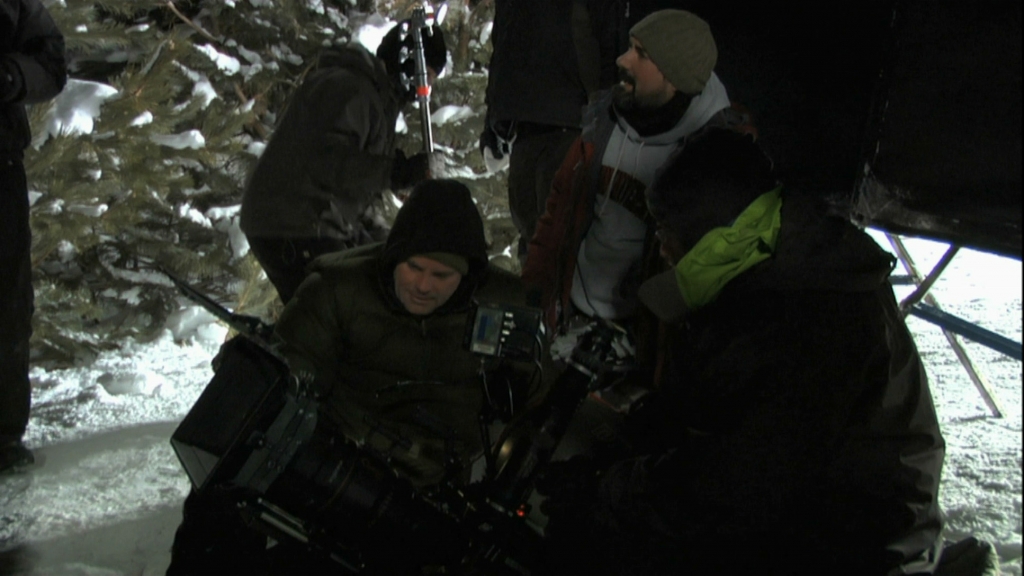
I have worked on some super low-budget films, and it warmed my horror heart to hear that he and Will Barratt, the director of photography, filmed everything on the ski lift themselves, since the rest of the camera crew were too afraid to be so far off the ground. No fake snow either. They filmed it in winter, in real snow! I was also extremely impressed with the actors for being willing to hang out 100 feet off the ground.
So fun fact: Adam Green has the distinction of belonging to the “Splat Pack.” A group that includes James Wan, Eli Roth, Darren Bousman, Rob Zombie, Alex Aja, and Greg McLean. These genre creatives are iconic for being the filmmakers who brought practical effects and extreme violence back to the horror genre in the mid-2000s. That’s right about the time I started getting really involved doing practical SFX myself, and these are some of the filmmakers who inspired me.
While doing my research, I also found out the final and coolest thing ever about Adam Green. He and I were club DJs in the LA area at the same time. I worked clubs and private parties from 1995 to around 2005 and he worked at the famous Rainbow Bar and Grill in Los Angeles from 2000 – 2003. I went dancing there quite often and always chatted with the DJ, so I suppose I actually met him back then. What a trip!
Adam Green will always hold a special place in my soul because of this film, and I look forward to seeing whatever he comes up with next.
4. HATCHET II (2010)
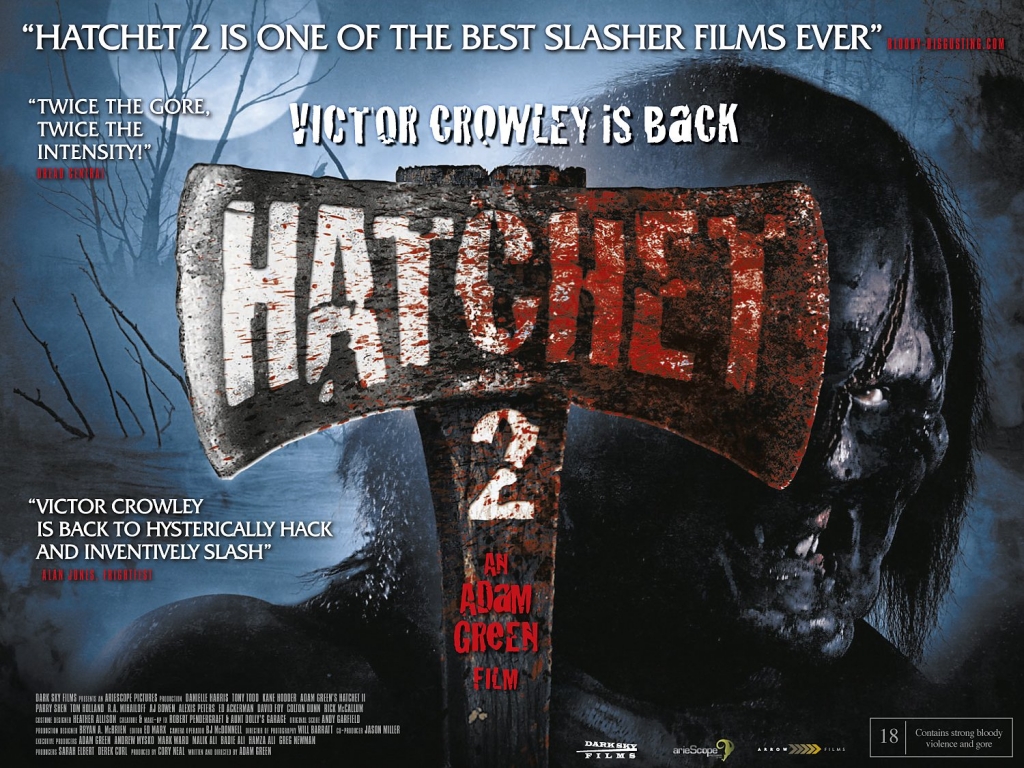
A love letter by Laura Sloan
When it comes to executing a worthy sequel, the stakes are quite high. But the unstoppable Adam Green and ArieScope Pictures family prove why they are the best at what they do, deliver a slashing “old-school American Horror” franchise!
While Hatchet II has a magnificent cast, it truly demonstrates an ingenious backstory and the fiery passion of an unyielding production crew.
Danielle Harris replaces Tamara Feldman as Marybeth Dunston. Harris is a chameleon, beautifully inhibiting any role she tackles. Here, she’s a natural, making us forget within the first ten minutes of the film that another actress ever played Marybeth. Badass Uncle Bob (Tom Holland) naturally renders as family. Meanwhile, Reverend Zombie (Tony Todd) carefully narrates the story of Thomas Crowley’s infidelity with Lena, his dying wife’s caretaker and the curse Shyann speaks upon their unborn son, Victor.
After giving birth to Victor, Lena dies, leaving father and son bonded by karma and unspoken love. Marybeth learns about her father’s past sin: the child who set the Crowley house on fire. Thomas accidentally kills his son with a hatchet in an attempt to save his life. When Thomas later dies, Victor’s spirit mourns the loss of his father, turning his swamp into a limb-tossing fortress of pain.
If anyone knew, what hell was on and off the set of life, that man is Kane Hodder.
We have taken for granted what a gift Hodder is. He delivers a performance of great depth, equally compelling as Victor and his father, Thomas. His empathy and regret fuel a profound presentation of Thomas. Unlike stale Chip Ahoy cookies at the bounty meeting, I deem Hatchet II like the filling of an Oreo cookie; it holds the Crowley foundation together.
“His presence was like a pestilence that turned the area into death.” – Rev. Zombie
That passage speaks to the beloved master of special effects, John Carl Buechler, who also plays Jack Cracker and the innovation of Robert Pendergraft’s creations. The swamp expedition escalates the bloody insanity of Hatchet and gives fans what they really want – more kills! Each person still alive is one more obstacle that stands in the way of Rev. Zombie’s agenda unveiled: the Samson/Crowley showdown of fate.
If you ever doubted Victor’s capabilities, this film should dispel all those doubts. He always manages to capture his prey and dispense them in many different and creative ways.
The effects are memorable and the kills are quite notable.
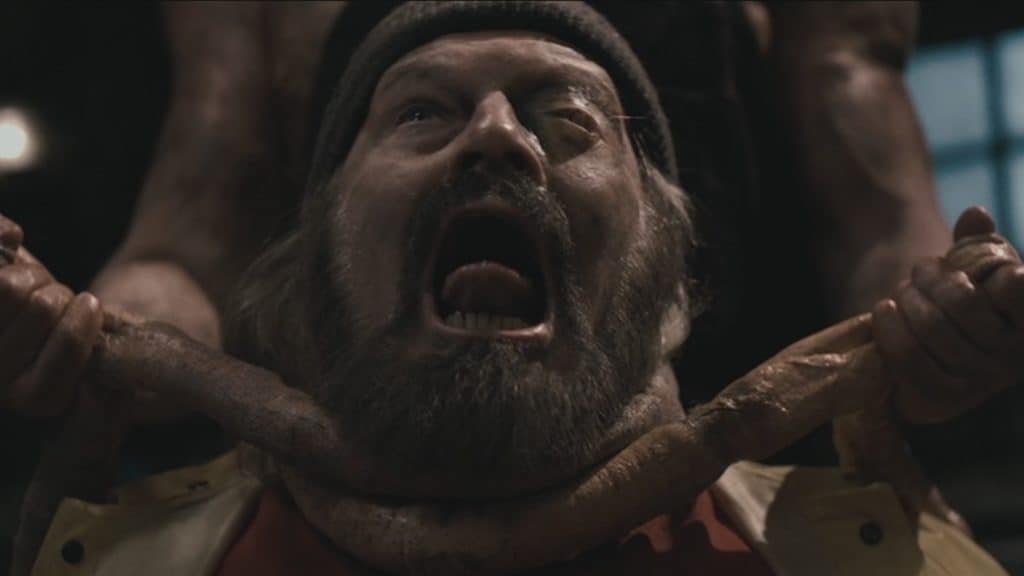
If you’ll indulge me, I’d like to highlight a few of my favorite kills, as they definitely warrant celebrating.
Pendergraft’s slicing of the face; Layton’s (AJ Bowen) decapitating sex scene; Justin (Parry Shen) welcomed by belt sander to the brain; Trent’s (R.A. Mihailoff) glorious head sliding; Rev. Zombie skinned out. Lastly, watching John (Rick McCallum) and Vernon (Colton Dunn) who get the honors of a two for the price of one chainsaw death. Vernon looking for kumbayas from anyone to sing about biscuits, chickens, and gravy shines as the most humorous character moment and dialog.
Strangely, I am finalizing this article on the two-year anniversary of Buechler’s passing (March 18, 2021).
May new generations have the honor of watching his craft translate to the screen as he left us with a gut-ripping legacy in Hatchet II.
5. HOLLISTON (2012-2013)
A love letter by Christi Bandy
Adam Green, a monster movie fan-turned-filmmaker, made his childhood dream of making horror movies come true, but to get to Green’s heart, you’ll have to watch Holliston.
A self-described “horror sitcom,” Holliston follows the daily grind of Green and his real-life friend and fellow director, Joe Lynch, as they play caricatures of themselves. The duo plays wannabe horror filmmakers that work a day job at a local cable access TV station (hilariously run by Dee Snider of Twisted Sister, playing an over-the-hill rocker stuck in the ‘80s…naturally).
Adam and Joe, flanked by gal pals Corri (English) and Laura (Ortiz), live in Holliston, Green’s real-life horror hometown. But this isn’t just your run-of-the-mill sitcom. The foursome deals with realistic situations like money, jobs, and dating in the most hilarious and tongue-in-cheek ways.
Of course, horror is a central theme of the show, and possibly the best part of the series aside from Dave Brockie from GWAR playing Green’s “imaginary best friend,” Oderus, who lives in Green’s closet (may he rest in peace) is the revolving door of guest stars from all our (and Green’s) favorite films.
Just a few of your favorite slasher stars that pop up include Derek Mears, Tony Todd, Danielle Harris (who stars in a laugh-out-loud episode called “Halloween Girl”), Ray Wise, Bill Moseley, and Sid Haig, just to name a few.
The star-studded show is special not just because its brutal truths (surrounded by sweetness, emotion, and humor) are dead-on but because this is a show made by a horror fan for horror fans, and it’s obvious that Green still geeks out about horror just as much as we do.
He’s one of us, and his sincerity seeps from every scene.
The show is a pivotal part of Green’s filmography due in part to the fact that Holliston isn’t like anything else – it’s entirely unique. After two much-loved seasons, the Fearnet cable network tanked, and the show lost its home (it’s since moved to Shudder) and fans have been hankering for more Holliston ever since. Green says we’ll still see another season at some point, and I truly hope we do.
Things that don’t work in most sitcoms, such as breaking the fourth wall, work here and work well, and watching Dave Brockie give Adam heartfelt life advice dressed as Oderus is something you may not know you needed in your life (but trust me, you do!) From found footage to zombies to an animated episode and nods to horror cons you’ll definitely find hysterical, this show has it all, and you’ll love the ridiculously bloody ride Green takes you on.
Perhaps the most important episode of Holliston that was a gift to fans was the one guest-starring Kane Hodder, titled “Suicidal Tendencies.”
Hodder, the beloved actor who played Jason Voorhees in four Friday the 13th films and became known to fans as the ‘true Jason’ considering he played the character more times than any other actor, was sadly not cast as Jason in Freddy vs. Jason, much to franchise fans’ dismay and Hodder’s own distress. Green and Hodder thought fans needed some reassurance after this monumental miscast, so they decided to turn the tables on a bad situation.
In the episode, Hodder plays a satirical version of himself and keeps trying to find ways to commit suicide due to losing the role of Jason. The episode was the pair’s way of telling fans Hodder was okay with the past and had made peace with it. Watching Hodder poke fun at himself was not only side-splitting (Hodder is a truly gifted comedic actor) but helped set fans’ minds at ease knowing Hodder had the last laugh.
Green is a talented filmmaker, and I think with Holliston, we get to see a glimpse of the man behind the camera, and it’s such a sweetly spooky and satisfying sight.
6. HATCHET III (2013)
A love letter by Laura Sloan
As Victor Crowley (Kane Hodder) rises up from the head blast bestowed upon him from Marybeth (Danielle Harris), it’s clear his death is far from the end in this Honey Island Swamp of carnage.
When “Adam Green presents” comes up in glorious red and dissipates into the other credits, Gwar’s “Hail, Genocide” paves the anthem of this series. Eight years later, Hatchet III still carries a spraying blood bath of exhilaration for me!
It takes savage trust for Green to hand over the directorial hatchet to BJ McDonnell (Slayer’s Repentless). It also helps that McDonnell is a longtime Hatchet family member with a superb visionary talent in cinematography. To master a Steadicam is to appreciate the Director’s integral vision, and that is a bonus for Hatchet III.
Green and McDonnell together, are relentless in the Crowley bloodbath saga — and it speaks volumes to what the third represents in the series, especially with a gifted cast driving the film.
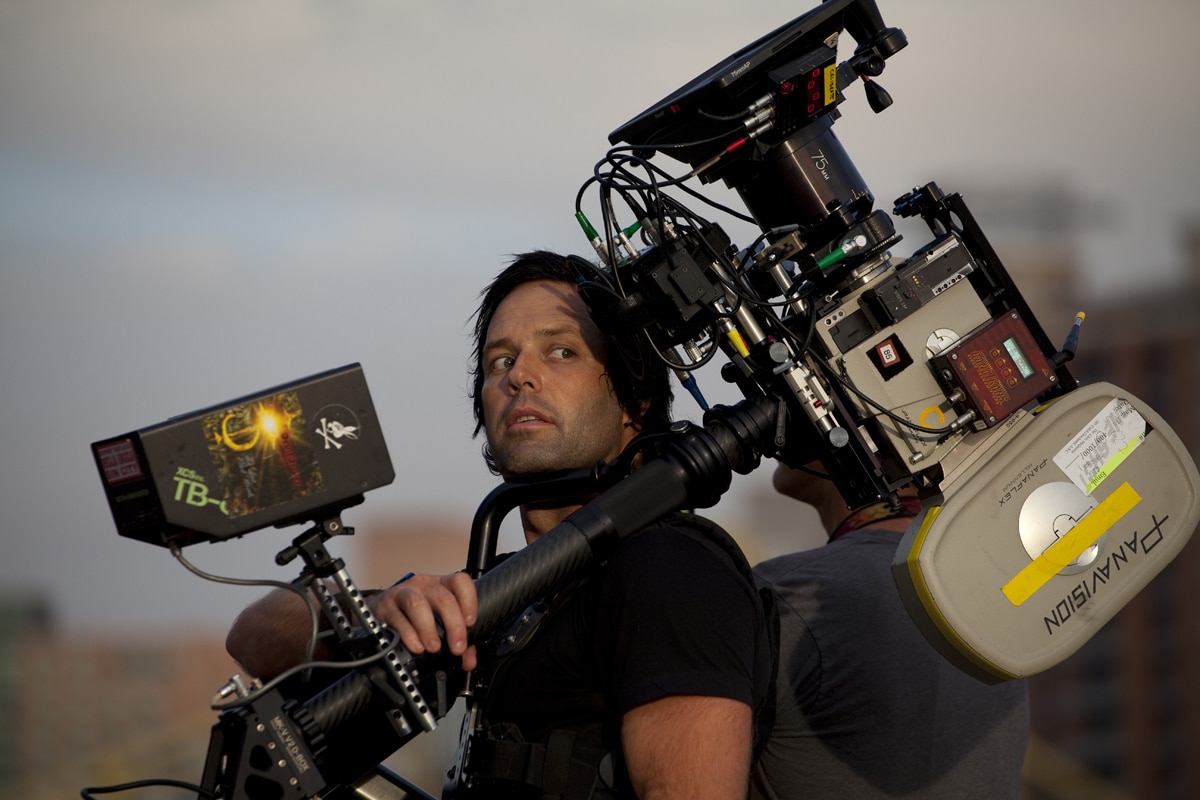
Danielle Harris returns as Marybeth Dunston, The Queen of “Fuck off!” She is Crowley’s oppositional force, drenched and sprayed in blood, and we love her because she can take it! She devours the screen in such emotional strength and beauty. The shots of her walking in the dew of the swamp with Victor’s scalp cutting to the zoom-in entry of jail warning, “I killed him!” gives Harris depth. The vulnerable shower scene alone illustrates Marybeth’s unyielding journey as the blood rinses her strong.
Caroline Williams as Amanda (Stretch-esque) demonstrates pivotal casting; leave it to her “Crowley Studies” to reunite Victor to his father’s ashes and complete the karmic curse.
We are at home in the gore-luscious franchise when Parry Shen returns as Andrew. Without that familiar face, fans would have the right to revolt! Zach Galligan as Sheriff Fowler is the character of urban legend disbelief playing well against believers and skeptics like Derek Mears as Hawes. Mears leads the machine gun caravan of a solid supporting cast including Jason Trost, Rileah Vanderbilt, Cody Blue Snider, Feast’s Diane Ayala Goldner, Sean Whalen, Robert Diago DoQui, and Sig Haig.
McDonnell and Green do not waste time on Hatchet III — nor am I distracted as the swamp sequences hold strategic pacing.
While other films exacerbate kill scenes three times over, they know when to call the scene, something more horror films desperately need today. With great intensity comes an equal balance of humor, giving the fans the ultimate release. That is a sign of a great writer who is intuitive while disciplined.
What I hold dear to my heart from August 2013 at Flashback Weekend in Chicago, IL was meeting George A. Romero and watching Hatchet III with Hodder in attendance. I watched George witness the culture he helped create. And in watching Hatchet III, I felt that homage.
Just as Romero brought back many from the dead, Green carries the fiery torch of carnage and dismembered limbs, making Hatchet III a worthy trilogy to his own lineage.
7. DIGGING UP THE MARROW (2015)
A love letter by Kelly Gredner (Spinsters of Horror)
Are there real-life monsters? And if so, are they truly monstrous or just misunderstood creatures of the night? That’s what the 2015 Adam Green film Digging up the Marrow encourages his audience to consider.
This is a severely underrated film in Green’s filmography which stars himself and the iconic (legendary) Ray Wise (Twin Peaks).
Digging up the Marrow is a mockumentary where Adam Green (playing himself) is contacted by a strange man named William Dekker (Ray Wise) who claims that he knows that monsters truly exist and even where they are located. Dekker knows of a place that he calls “the marrow” where genetic monsters go to live, breed, and die. He claims that human babies born with abnormalities and deformities go to “the marrow” to live out their lives in peace, away from the scrutiny of the public eye.
Dekker is initially seen as our mentally unwell, “tinfoil hat” wearing, lonely old man.
But then Digging up the Marrow takes a very interesting, and compassionate, turn as we learn more about Dekker and his quest for sharing his knowledge of “the marrow”.
Green demonstrates his acting abilities alongside his directorial skills and creates a film that becomes surprisingly scary.
The creature designs are imaginative and otherworldly, and Green doesn’t hold back on the jump scares. The found-footage style of Digging up the Marrow isn’t necessarily groundbreaking, but when it’s contrasted with a heartwarming and fascinating concept, it works incredibly well.
Digging up the Marrow makes you wonder whether those “Things That Go Bump in the Night” are real, and if they are, do you really want to get to know them?
I adore this film and highly recommend all horror fans to give it a chance!
8. VICTOR CROWLEY (2017)
A love letter by Danni Winn
In an impressive clandestine feat, Adam Green cast and crew brought a monumental screening to a sold-out crowd at the ArcLight Cinema in Los Angeles, California, in August of 2017. Just about four years after the third installment, which was supposed to be the last into the successful Hatchet franchise, Green surprised fucking everyone by swapping an anniversary screening of his feature horror debut, with a brand spanking new entry, Victor Crowley.
Featuring Hatchet mainstays like stars Kane Hodder and Parry Shen, as well as the insanely talented practical effects wizard, Robert Pendergraft, returning along with a mind-boggling list of fan favorites like Felissa Rose (Sleepaway Camp), Tiffany Shepis (Death House, Pickaxe), and Chase Williamson (Beyond the Gates, Scare Package), Victor Crowley brought a solid helping of genre talent once revealed to the masses.
Victor Crowley may have never been though, if it weren’t for another horror hero, the great George A. Romero, serendipitously stepping in.
In 2015, during the Rock and Shock Horror Convention, Romero requested Green to moderate his panel. Immediately recognizing the honor this was, the young filmmaker obliged despite being in a dark place. After a significant series of personal losses and professional setbacks, Adam simply just wasn’t feeling inspired. But when Romero calls, you answer. It was a spirited panel. At the conclusion, the crowd began to stand; enthusiastically whistling and clapping. At this moment, recognizing what just transpired, and what Romero quietly spoke to Adam afterward, helped him to become refocused.
In a heartfelt artist to artist, the “Grandfather of Independent Cinema” pointed out to Green that the room full of horror aficionados obviously not only celebrated his work but Adam’s as well. In what must have been the pep talk of the century, Adam walked away with a revitalized need to create.
Almost immediately, Green furiously began writing what would become Victor Crowley, a film that would later become dedicated to George A. Romero, and embarked upon the Dismember America tour in select theaters across the U.S.
This fourth, and no less violently hilarious entry into the franchise, received a standing ovation t its secret World Premiere at the ArcLight in Los Angeles, during FrightFest in London — and later with one of the most desired blu-rays Dark Sky Films released in 2017.
In a conscious attempt to rival the revered kill of Mrs. Permatteo’s in the original Hatchet, Green, FX artist Robert Pendergraft along with their team effectively deliver an awe-inspiring slaying for Felissa Rose’s character that is only one of the highlights of Victor Crowley.
Uncomfortably trapped in a crashed plane within the famously haunted bayou of Honey Island Swamp, original survivor, Andrew Yong (Parry Shen), is surrounded by disbelievers and the complicated relationship with his ex-significant other and talk show host, Sabrina (Krystal Joy Brown), while the supernatural slayings of legend, Victor Crowley, begin to manifest themselves. On the surface, this perfect ensemble cast may have served to deliver some lighthearted laughs and become sacrificial lambs to the titular Victor Crowley. Instead, we are treated to likable characters that were also relatable, with real-life vulnerabilities.
Witnessing Green bounce back was fucking inspiring. Adam has his photo of Romero taking him under his wing sitting next to his desk at ArieScope; a meaningful memory. And I have my own treasured photo; Adam hugging me at the South Lamar, Alamo Drafthouse in Austin, Texas years prior.
Where Hatchet helped reignite my love of writing, Adam’s personal journey involving Victor Crowley helped me not only face some of my own personal demons but battle them.
9. THE MOVIE CRYPT PODCAST (2013-current)
A love letter by The Angry Princess (Stephanie Malone)
Hosted by filmmakers and Holliston series co-stars Adam Green and Joe Lynch (Everly, Mayhem), The Movie Crypt podcast is a free weekly show that celebrates the spirit of indie filmmaking, highlighting the personal journeys of some of the industry’s most talented and inspiring artists and creators.
While the show has featured plenty of more noteworthy names — including Chris Columbus, John Landis, Slash, Jordan Peele, Roger Corman, James Gunn, Joe Dante, Henry Rollins, and Greg Nicotero — what makes it truly special is how much it highlights lesser-known talent who truly deserve more recognition. Some shows cater to fans. This one caters to film lovers.
This isn’t a show about celebrity; it’s about passion and perseverance.
There is so much love, respect, and reverence for the craft. Every aspect of filmmaking is honored. Beyond the accolades and the fame, this is about the blood, sweat, and tears needed to bring a vision to life. It isn’t always glamorous, and it’s never easy. But there’s a need to create something that drives every guest, and each one is more compelling and inspiring than the last.
Adam and Joe are a joy to listen to. They’re incredibly real and relatable, and you are invited to share in both their triumphs and their tribulations.
Ever humble and generous with both their time and their truth, The Movie Crypt is less about self-congratulation and much more about honoring the spirit of getting knocked down and continuously getting back up again.
Both hosts possess an encyclopedic knowledge of and passion for genre cinema. Not only will you be entertained, but you are guaranteed to learn something. It’s always eye-opening and intriguing to hear all about the ins and out of filmmaking — from writing, filming, editing, marketing… and beyond.
You’ll walk away from every episode smarter and increasingly respectful of the talent and tenacity it takes to bring us quality entertainment.
The show premiered on May 6, 2013, and it just celebrated a whopping 400 episodes. In the 400 weeks since the show began, the guys have never missed a single Monday without a new episode. And they’ve shared almost eight years’ worth of laughs, tears, births, deaths, successes, and heartbreaks with a worldwide audience. In the show’s 400th episode, Green and Lynch interview each other with the kind of in-depth questions they’ve never been asked in the almost 2 decades that they’ve each been doing press for their various films.
This show is a true labor of love, and that shines through every week.
If you love movies, The Movie Crypt is essential listening. And, if you don’t already harbor a passion for the craft, I’m almost positive you will after listening to this extraordinary podcast.
10. YORKIETHON (2016-Current)
A love letter by Danni Winn
For the last five years, filmmakers, friends, and dynamic Movie Crypt podcasting duo Adam Green and Joe Lynch (Everly, Wrong Turn 2, Mayhem) have come together in December to do some serious good. As you may know, Adam loves his dog — a Yorkie named Arwen. The tiny pooch pretty much goes everywhere with him, stealing hearts along the way. The bond between Adam and Arwen is undeniable, and the catalyst of how Yorkiethon came to be.
In a live, 48 hour broadcast streamed for FREE on ariescope.com, co-hosts Lynch and Green — with a slew of special guests — bring everything from script readings, comedy, celebrity discussions, and commentary to live music. There is so much variety to Yorkiethon every year, all in hopes of raising money and awareness for the Save A Yorkie Rescue.
“We’re staying awake… so that they don’t get put to sleep.”
Both Green and Lynch should be viewed as goddamn national treasures. Staying awake around the clock for 48 hours and offering fans unprecedented conversations with fellow celebrities just to help some furry friends.
In addition to the almost unfathomable array of guests and entertainment presented, is the silent auction which is run in tandem with Yorkiethon. Some incredibly coveted items have found their way on every year’s auctions including a variety of autographed movies and memorabilia, vinyl, t-shirts, artwork, live tarot card readings by Adam’s long-time producer Sarah Elbert, and so much more.
Never charging for autographs, continuously creating content for us to consume, contributing some of the best movie commentaries, approachable and receptive, hardworking, humble, and above all… so fucking thankful for his fans. Adam Green is one of the most undersung yet indispensable additions to horror. Ever.
The man exudes an extraordinary love for the genre and for the craft. Yorkiethon is simply just another example of how Adam Green utilizes his platform to spread welcomed good in this universe and the world could always use more of that.
Happy Birthday, Adam. This fan, along with countless others, thank you for all you do.


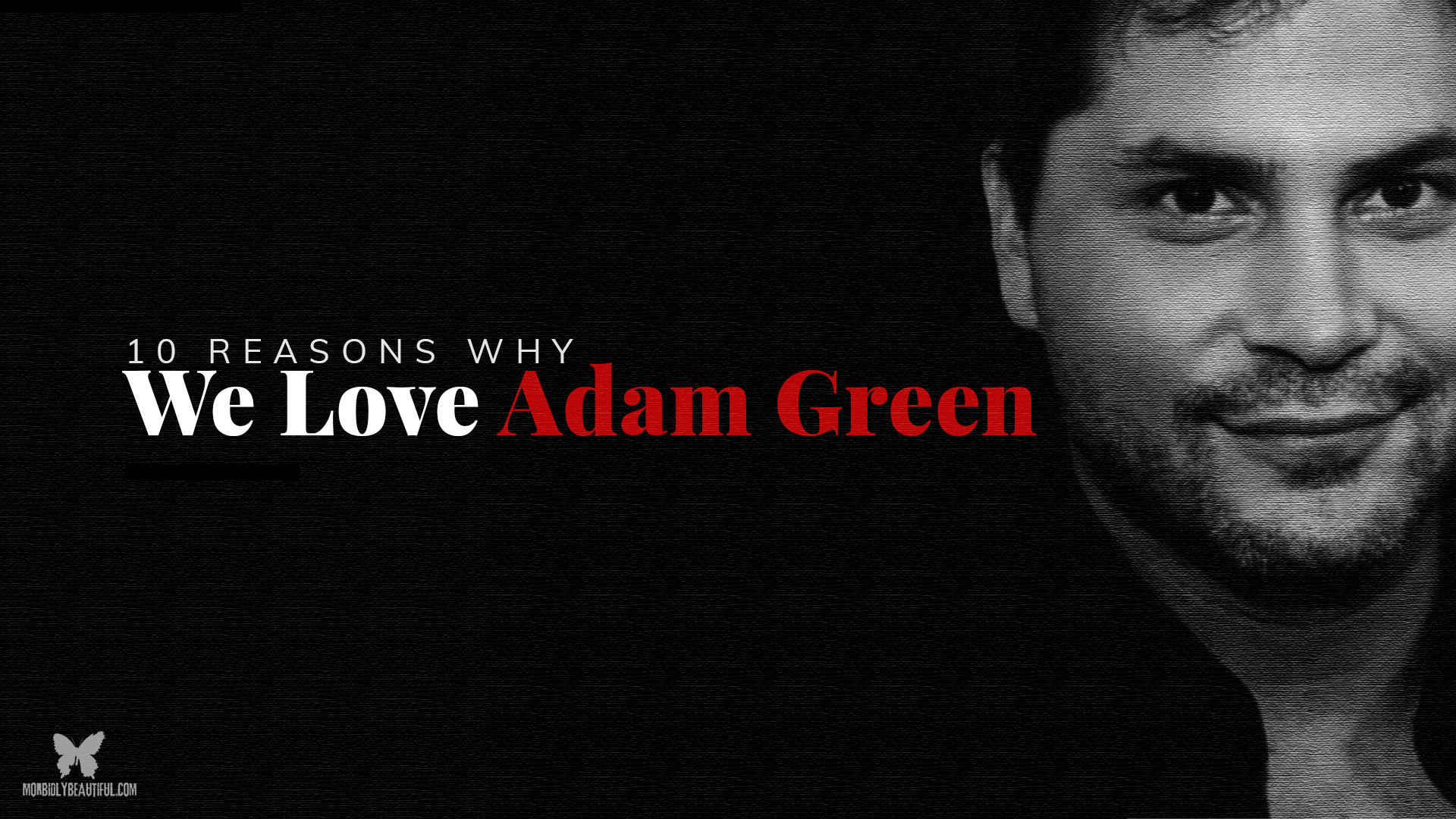


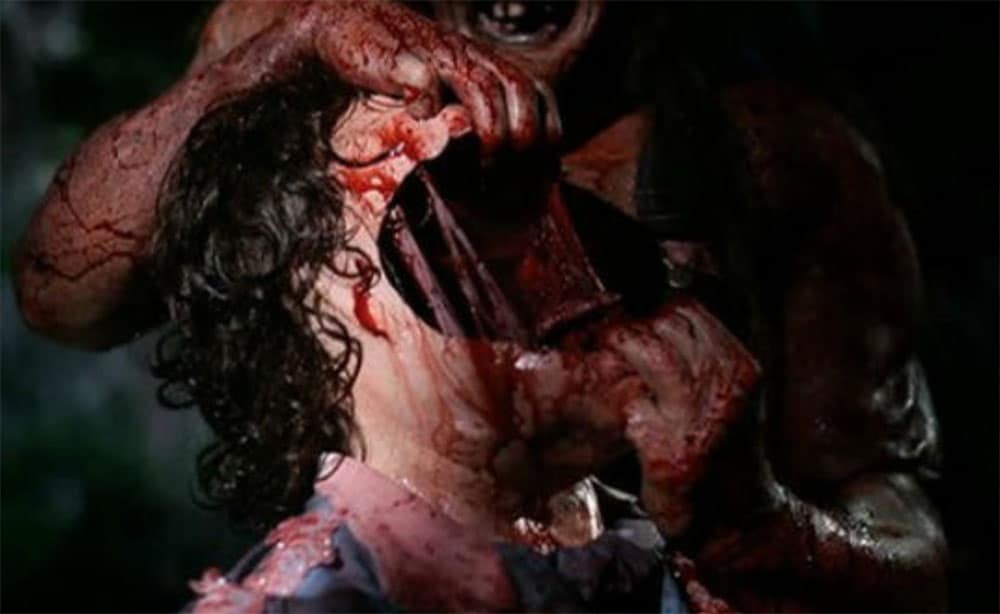
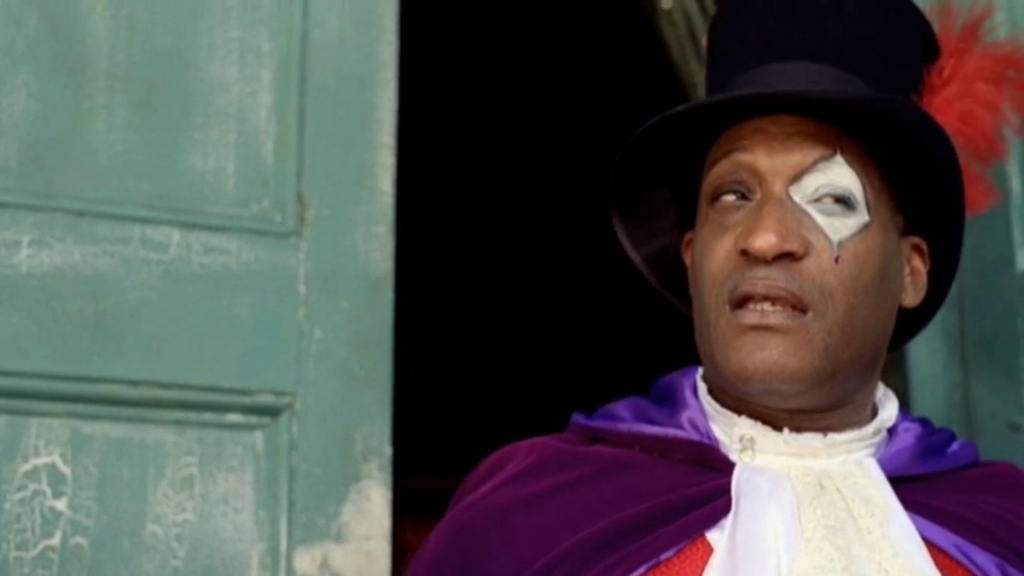

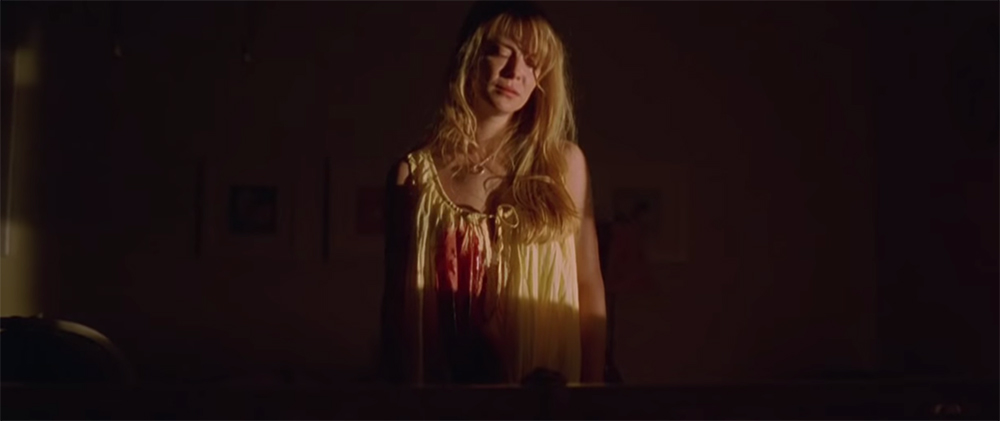


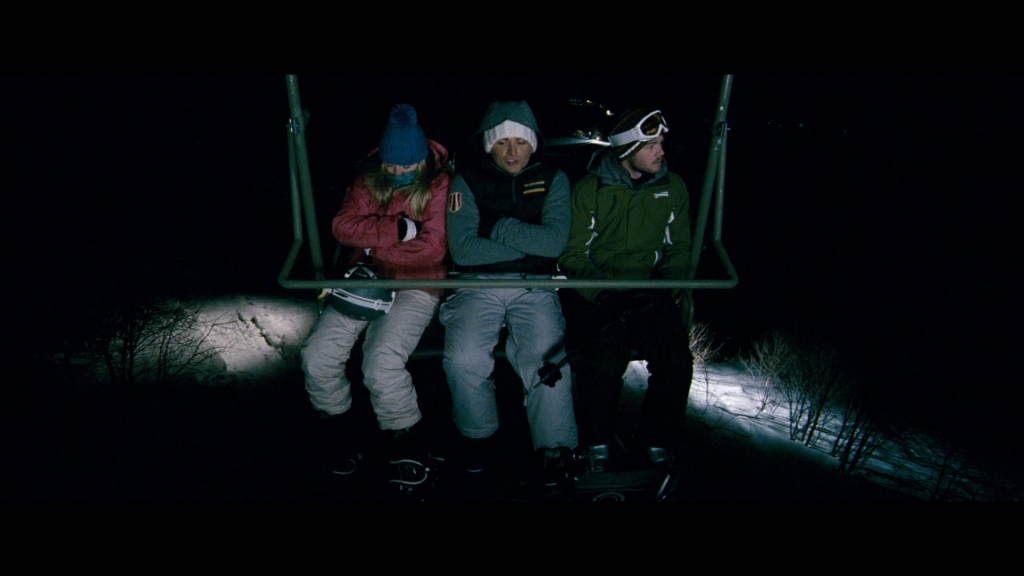
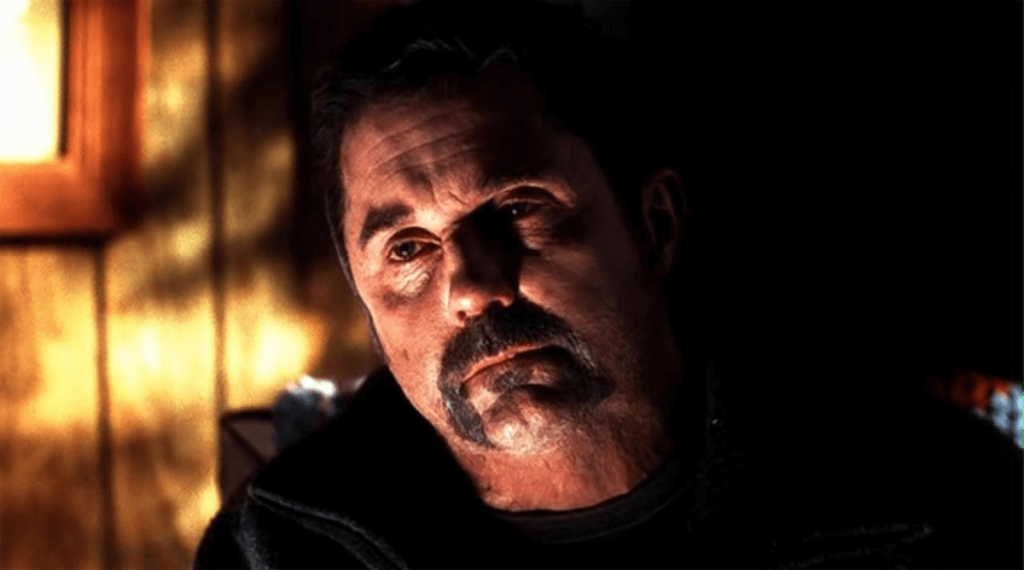
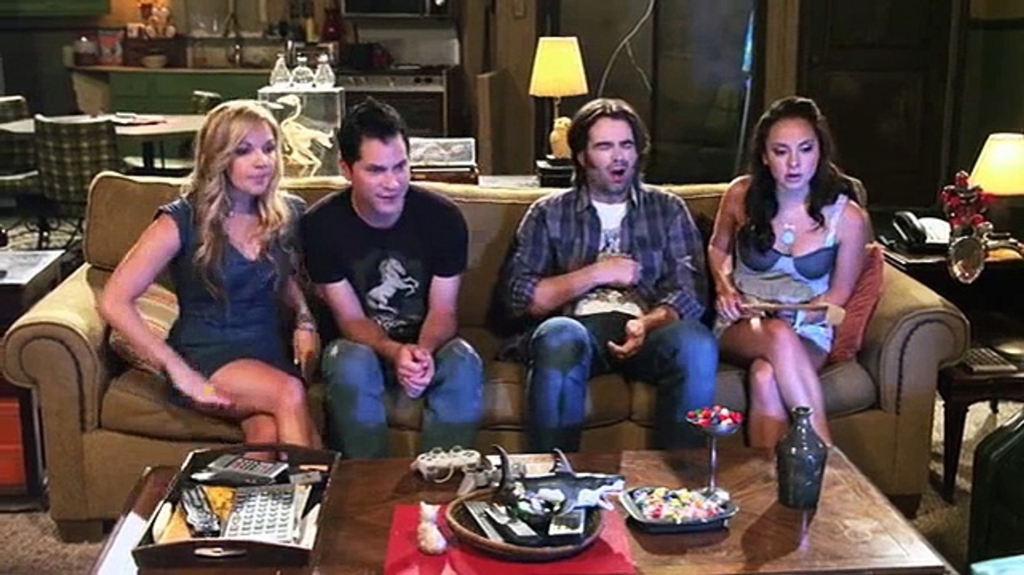
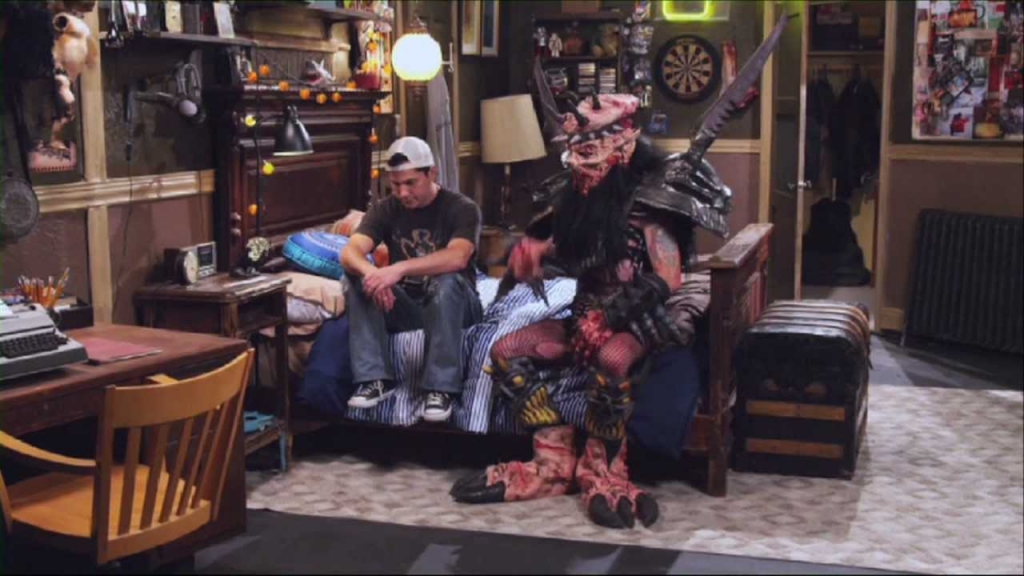
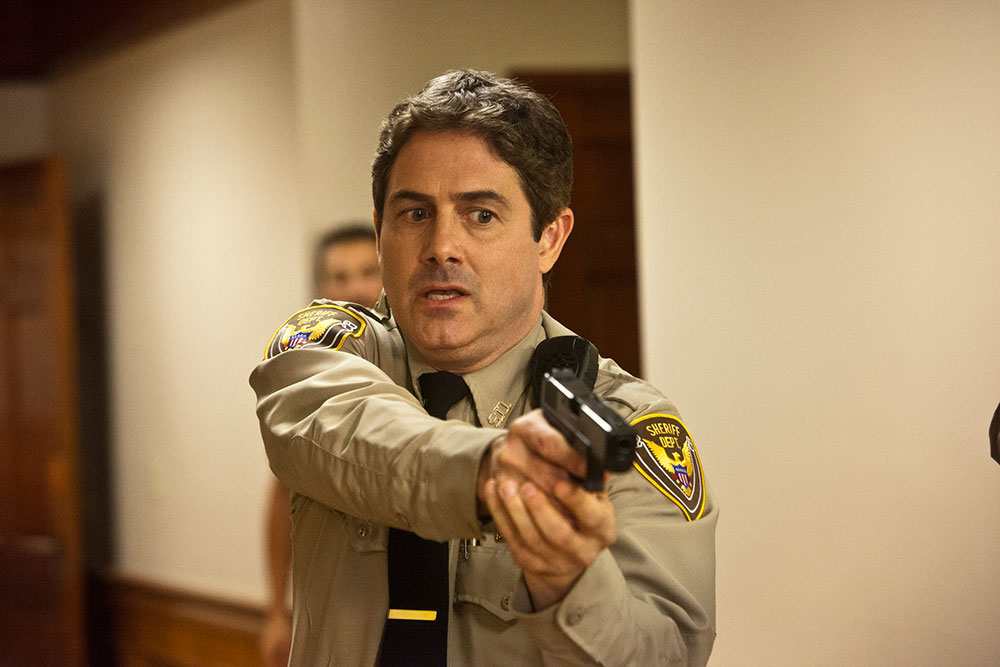

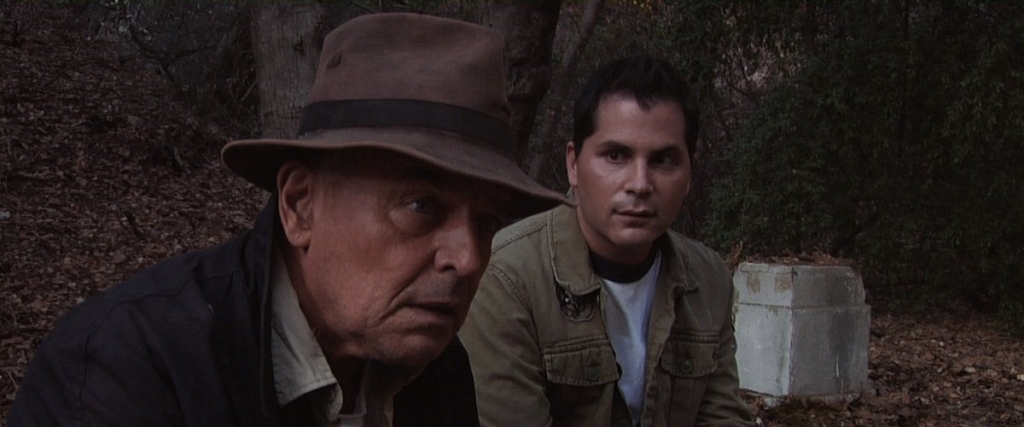
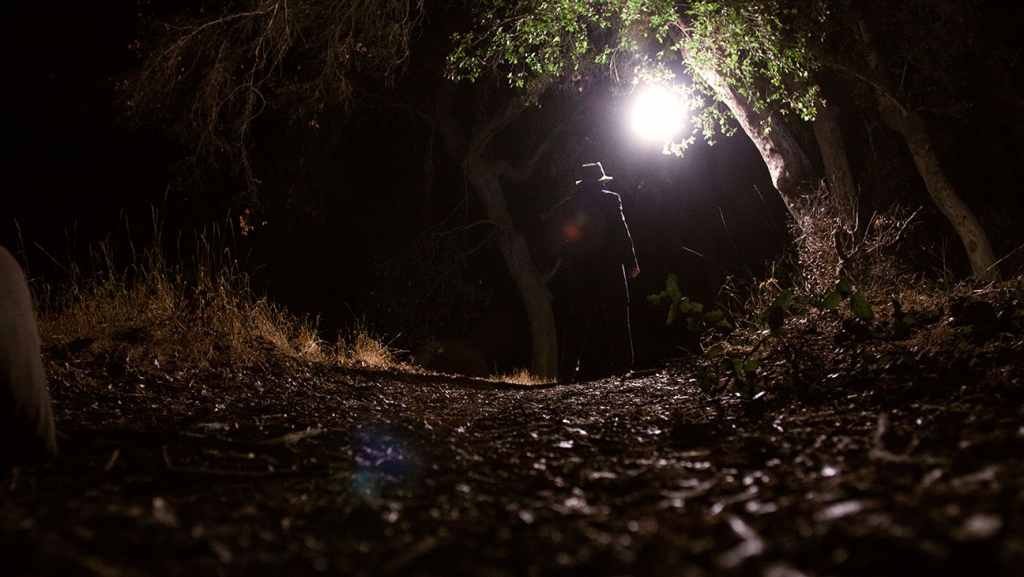
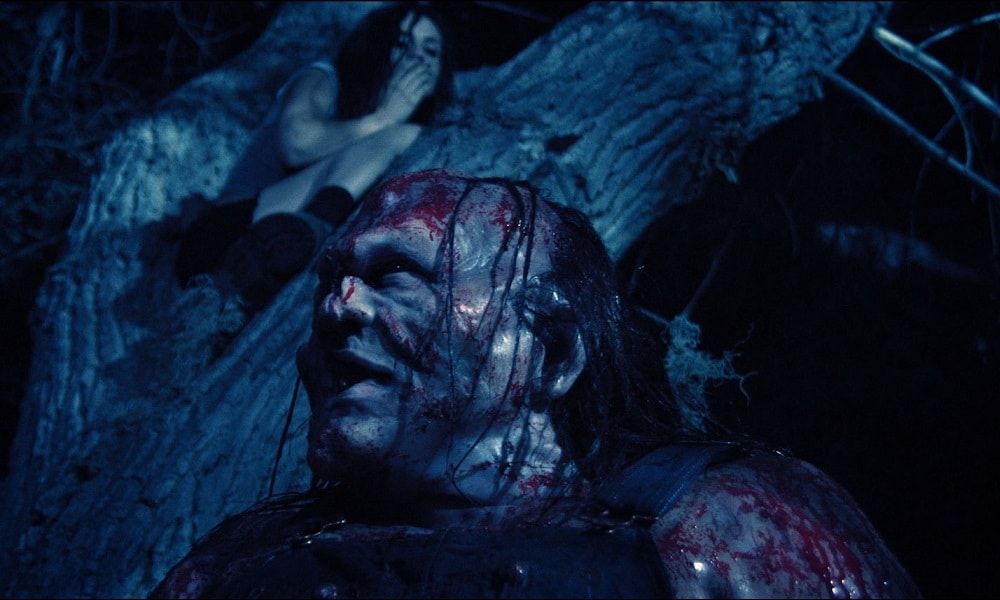
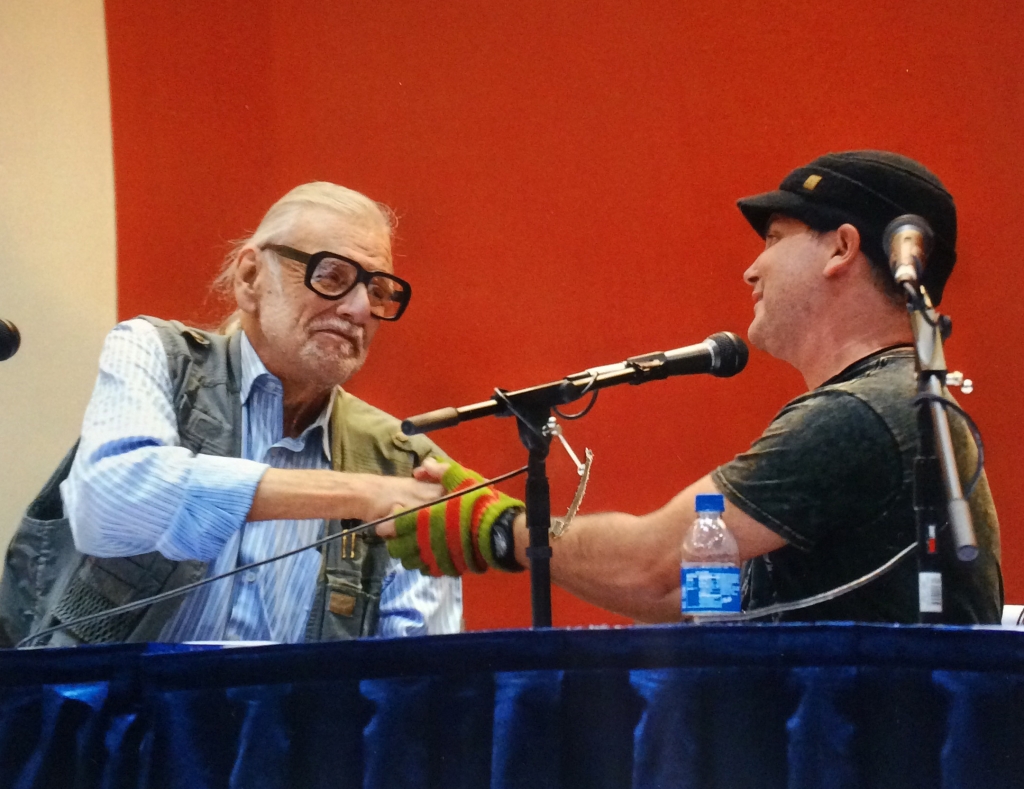
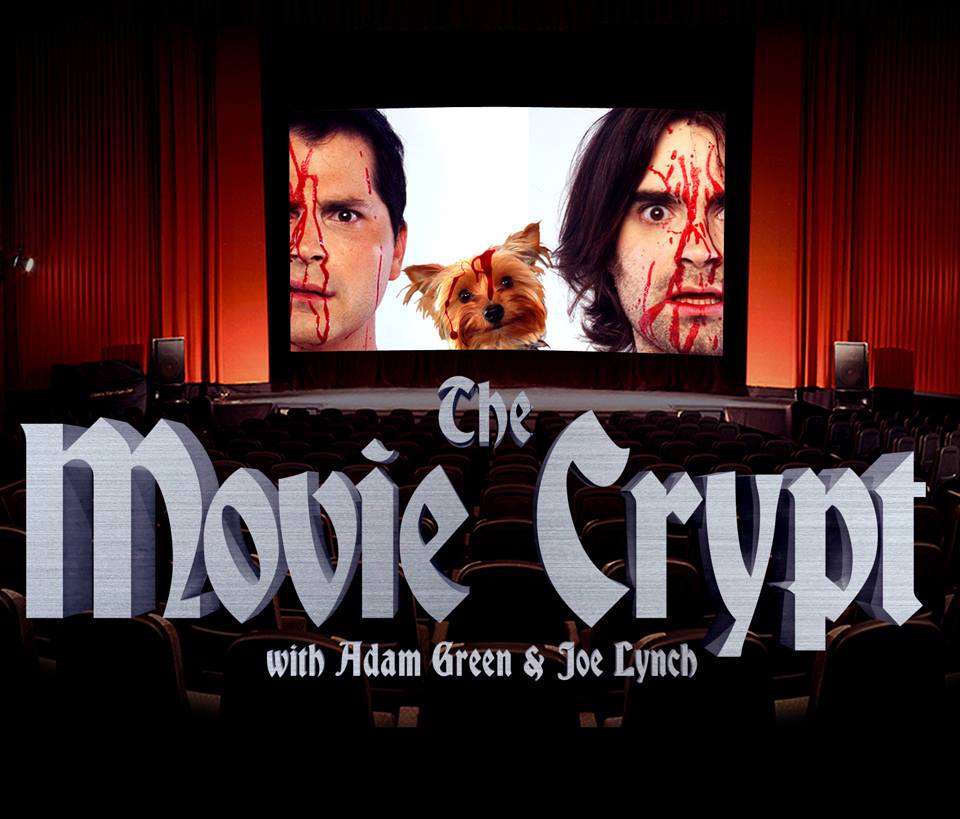

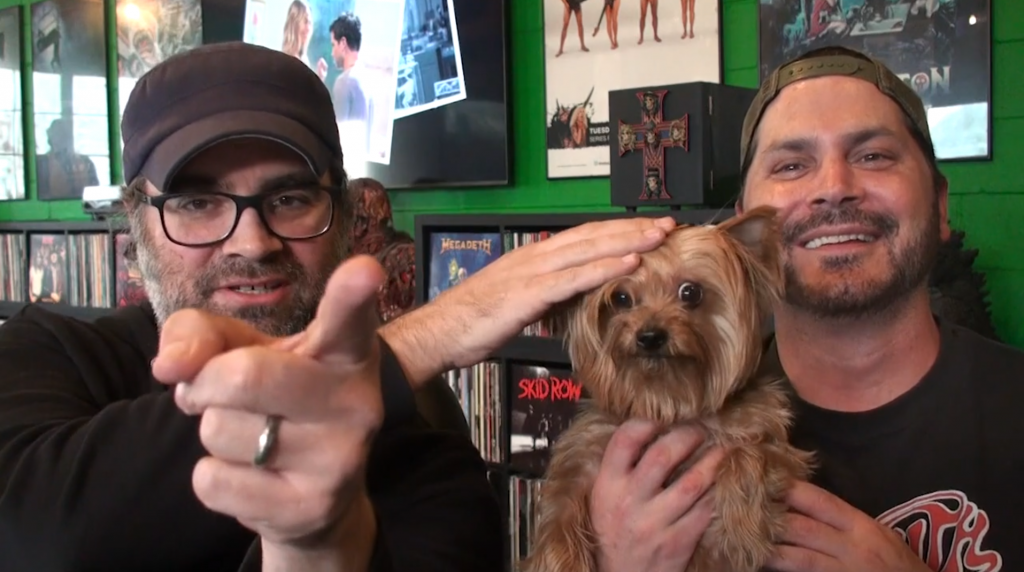
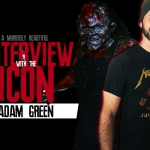
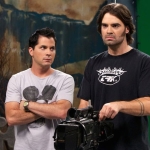
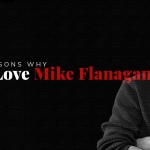
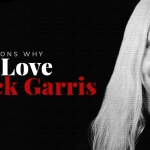

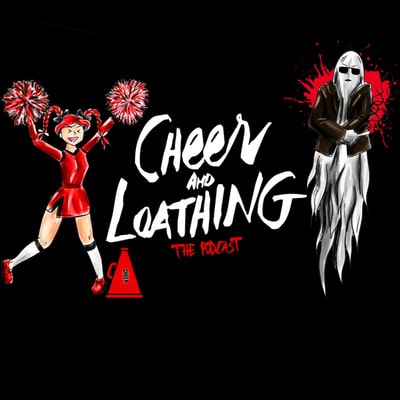
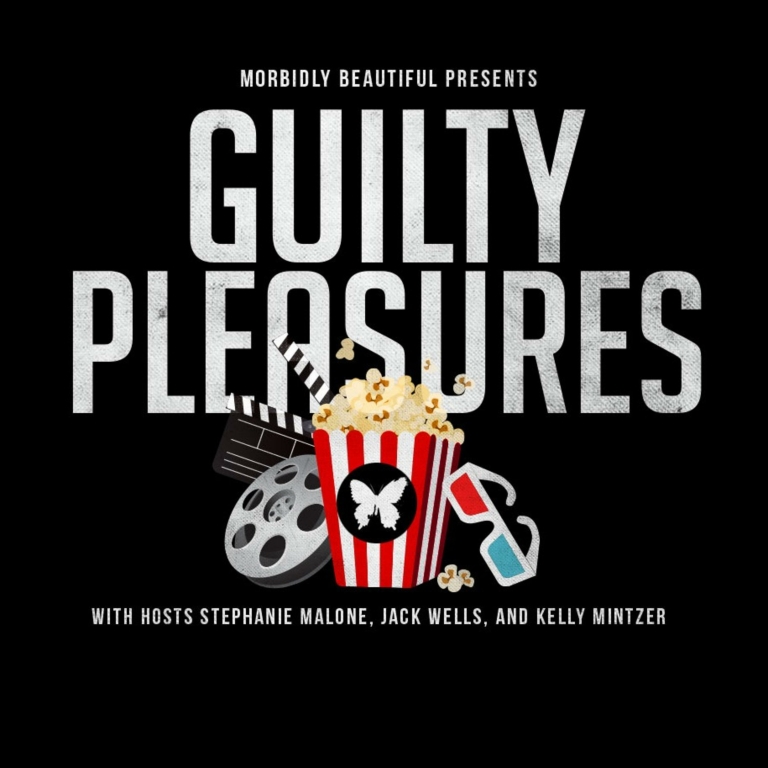
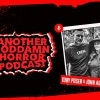
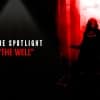
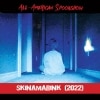

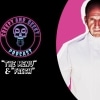
Follow Us!